Tatar minority in Finland — fully integrated into society
Okan Daher, lecturer in Tatar Language and Culture at the University of Helsinki Honorary President of the Finnish Islamic Congregation of the Tatar Community, in his article tells about how immigrants from the Volga region integrated in the society of the North country. He describes how they managed to keep their religion, language and identity away from their historical homeland. Realnoe Vremya expresses its gratitude to the author for the material.
The Tatars provide a good example of successful integration: they have adapted well to Finnish society as hard-working citizens, while managing to maintain a close community. The Tatar community has not asked for outside help but has, through its own resilience, acquired good-quality premises for itself and been able to maintain two graveyards. It has also set an example for new groups of Muslim immigrants.
1. Introduction
The Tatar community is one of Finland's historical and national minorities. There are now about 700 Islamic Tatars of Turkic origin in Finland, of which most, approximately 600 persons, are members of the Finnish Islamic Congregation (Suomen Islam-seurakunta), formerly Finnish Mohammedan Congregation, and some 100 people belong to the Islamic Congregation of Tampere founded in 1943. A uniform linguistic and religious minority started to form during the latter half of the 19 th century and at the beginning of the 20th century. Its members mainly originated from Tatar villages in the neighbourhood of Volga area in the Government of Nizhny Novgorod in the Tsarist Russia, which were neighboured, for example, by Finno-Ugrian Mordvins and Russians. They had practised agriculture as smallholders in their home villages, but cultivated areas had decreased over years and become unprofitable due to land ownerships. Trading activities started to develop alongside agriculture within their own province. Gradually trade trips stretched all the way to Saint Petersburg along the railway and further to the Grand Duchy of Finland via Terijoki (now known as Zelenogorsk) and Vyborg.
The new land proved to be favourable for trade. At first, the Tatars were engaged in itinerant and market trade, but soon they established market halls. As trade changed into business activities practised at certain localities, the Tatars began to establish textile, clothing and fur shops in towns and provincial centres. Stable income thus guaranteed a living for Tatar families. Trade has often broken down old barriers, brought peoples into interaction and thus created new cultural connections. This way a small and unitary cultural community started to evolve in our country at the turn of the century, person-by-person and family-by-family. There was no room for marginalisation, since earning a living required adjustment, and consequently the Tatars integrated quickly and seamlessly into Finnish society. Because the structure and sound system of their mother tongue resemble Finnish, it was easy for the Tatars to learn the new language. It was also known that Finns are relatives of Moksha Mordvins, who had been their good neighbours.
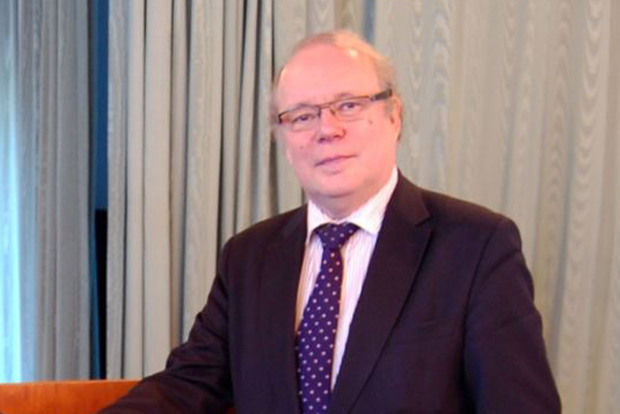
Okan Daher: ''Over the last century, the Tatars developed a Finnish identity alongside their own culture; Finland is, after all, the native, home and fatherland of the community members.'' Photo: gdb.rferl.org
2. Double identity
The Tatars became citizens of independent Finland and builders of Finnish society, and integrated into the Finnish culture while retaining their own cultural characteristics, even in the fifth generation. What has enabled the building and preserving of this fruitful double identity? The first and the second generation created a strong mental and material basis for building the community through their industriousness, will power and mutual solidarity. The community is centred on the family, the home, which is supported by a well- organised community. Traditions followed within the community provide young persons with a clear awareness of their own roots and identity as well as with a strong self-esteem. Close ties with the family and relatives create a sense of togetherness and security, which is reflected positively in the whole of society. The fostering of Tatar cultural heritage has, however, required enormous efforts.
Over the last century, the Tatars developed a Finnish identity alongside their own culture; Finland is, after all, the native, home and fatherland of the community members. Since the early years of Finland's independence, the community has shared the same ups and downs with all the other Finns. 156 young men and 21 women of the community participated in the Winter and Continuation Wars between 1939 and 1944. Ten Finnish Tatar soldiers were killed defending the independence and interests of Finland.
Finnish identity starts to form already at an early stage in children's yard games and Finnish play groups. At comprehensive schools and upper secondary schools, children come in close touch with the Finnish culture through instruction, school friends and their families. The foundations for working life are laid at universities, institutes and vocational schools, which expand the individual's living environment. The majority culture has an immense influence, and marriages have created bilingual families where two cultures meet every day on all levels. In summary, the community members have built their identity in a balanced manner based on their own linguistic and cultural heritage and religion as well as the values of the Finnish majority society.
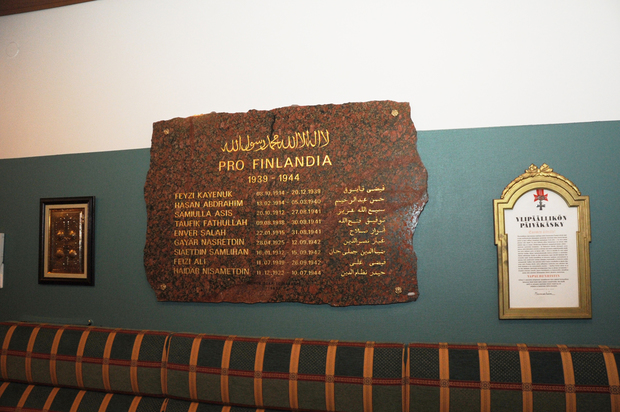
Okan Daher: ''156 young men and 21 women of the community participated in the Winter and Continuation Wars between 1939 and 1944. Ten Finnish Tatar soldiers were killed defending the independence and interests of Finland.'' Photo: prav.tatarstan.ru
3. Rich and lively language
The mother tongue of the Finnish Tatars is a dialect of the Tatar language, more specifically its Western dialect, Mishar Tatar. The Tatar language belongs to the Kipchak branch of Turkic languages, and it is spoken commonly within families and the community and so children learn it as their first language. The starting point for everything is upbringing of children, for which not only parents but also grandparents and relatives are responsible. Learning is supported by a children's play group, which the congregation organises on weekends, and by mother-tongue courses in the autumn and spring terms and during summers. Young people are included from early on in the activities of organisations operating in connection with the congregation. They participate, for example, in choir and theatre performances arranged by a cultural society. In general, lively interaction, close ties with the family and relatives, and events arranged by organisations are particularly suitable for promoting the use of mother tongue. Mother tongue teachers usually come from within the community, but in earlier days additional resources were also received from Turkey. The community has its own writing method, which is based on the Latin spelling of Turkish and Finnish. It is clear that mastering one's mother tongue is the basic requirement for all learning. It is also one of the characteristics of national identity.
Even though the Finnish language has influenced the minority language, the Tatar community still has a clear and vital linguistic identity. Cultural connections with the Republic of Tatarstan, which belongs to the Russian Federation, and with the cultural circles in its capital Kazan have also contributed to the appreciation of the language. At the same time, the language has been enriched by Turkish and the contemporary Tatar language of Kazan over the century. As internationalisation has proceeded, the community has built contacts with Tatar communities around the world, e.g. in Sweden, Estonia, Turkey, Australia and the United States, which considerably increases opportunities for the use of the Tatar mother tongue.
The Tatar community in Finland has a rich and diverse cultural heritage. Folk songs and music live within the community and bring its members together to cultural evenings and other common events. Theatre plays based on the classics of Tatar literature are also popular. The Finnish Tatars have produced their own literary works, including song books, religious text books, poetry, fiction and their occasionally published magazine and newspaper Mahalla Habarlare.
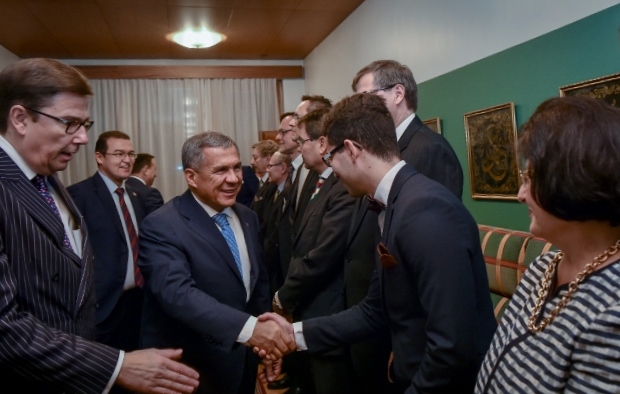
Cultural connections with the Republic of Tatarstan, which belongs to the Russian Federation, and with the cultural circles in its capital Kazan have also contributed to the appreciation of the language.'' Photo: prav.tatarstan.ru
4. Community spirit of the congregation
Religion is highly important to a small community. It is primarily a strong personal conviction but also a resource which gathers members together and unites them. The Tatars have inherited the Islamic religion from their ancestors, the ancient Bulgars who lived in the Volga area and adopted Islam already in the 10 th century. The Finnish Mohammedan Congregation, whose name was changed into the Finnish Islamic Congregation in 1963, was entered into the register of religious communities in 1925. This was enabled by the first Act on Freedom of Religion that entered into force in 1923. In fact, Finland was one of the first European countries that officially recognised an Islamic congregation. The congregation was preceded by a Charitable Musulman Society of Helsinki (Helsingin musulmaanienhyvantekevaisyysyhdistys) established in 1915, which united the Tatar population and furthered its issues.
The congregation takes care of the religious education of school children during the school year and at summer camps. Religious education is given by the congregations imam in the Tatar language. Since the early 1960s the congregation has invited imams for its service from Turkey — and after the collapse of the Soviet Union from the Tatar communities of the Russian Federation — to conduct prayer events and sermons, solemnise marriages and perform other religious ceremonies. The selection requirements have included the knowledge of the Tatar language and the ability to adapt to new circumstances and to Finnish society. Community members also volunteer actively for various duties at the congregation.
The congregation is not only a religious community but also a unitary linguistic and cultural society, which fosters the cultural heritage and at the same time provides both mental and economic support for cultural and sports clubs operating within it. A cultural society called Finlandiya Turkleri Birligi FTB was established in 1935 and a sports club called Yolduz in 1945. The Tatars also had their own primary school in Helsinki between 1948 and 1969, named the Turkish Primary School — which in addition to the Finnish primary school curriculum gave instruction in the Tatar language, religion and history of Turkic peoples. For a short period, it also taught Turkish language. The school was maintained by a Support Association for the Turkish Primary School, which also received financial assistance from the City of Helsinki and the congregation. In addition, other cultural organisations founded by active members have operated in the cities of Helsinki, Tampere and Turku.
The congregation centre is located in central Helsinki. The building, which is owned by the congregation and was completed in 1960, houses a mosque, assembly hall, kitchen, congregation office, club room, teachers' room, small library and two class rooms as well as meeting rooms for the congregation board and various organisations. Furthermore, there is a mosque completed in 1943 in the City of Jarvenpaa, which used to be the northernmost mosque in the world. Prayer rooms are also found in the cities of Turku and Kotka. The congregation takes care of the burial of its own members and maintains graveyards in Helsinki and Turku.
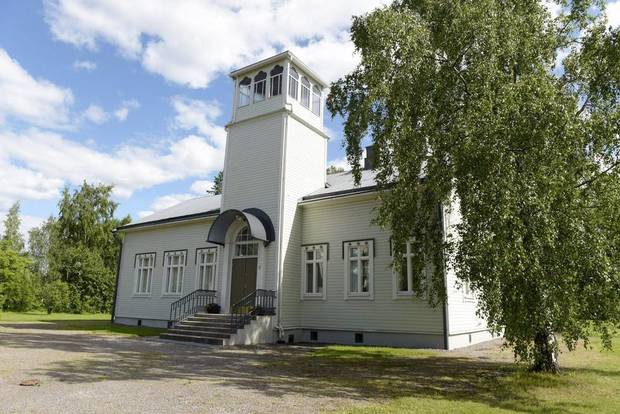
5. Cultural characteristics
Important religious holidays and evening events gather community members to common celebrations, as well as national festivals, such as the Sabantuy summer festival organised in connection with summer camps.
Traditional banquets and national dishes have an important place in the Tatar culture. Well-known dishes include various pies (e.g. peremech) and soups (shorba). The cultural society has also published a Finnish and Tatar-language cookbook with recipes for traditional dishes.
A special social characteristic of the culture is that the Tatars take care of their elderly at home as long as possible. Weekly meetings organised by the congregation provide recreational activities and an opportunity to meet each other for pensioners and the aged.
On the other hand, sport gathers young members together to pursue various hobbies. In wintertime the sports club organizes winter-holiday camps for school children and families. Some members also play tennis and golf. The football team of the Yolduz sports club has participated, in addition to league matches of the Helsinki division, in friendship matches against football teams of other minorities in Finland, such as the teams of the Jews (Makkabi) and Arabs (Saikus). The football team of the Estonian Tatar community has also visited Finland, while Yolduz has travelled to Algeria, Turkey and Tatarstan to play against their local teams in friendly tournaments.
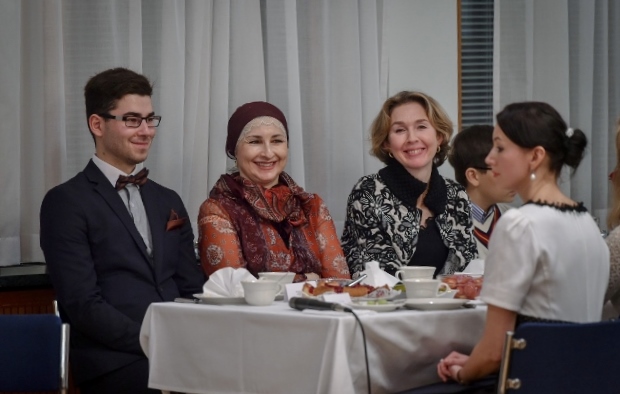
''The community's message to new immigrants has been that minorities should seek to preserve their own language, religion and cultural heritage. At the same time, they should adapt to Finnish society in a flexible and constructive manner and comply with the country's legislation.'' Photo: prav.tatarstan.ru
6. Integration
The structure of the community has naturally changed over the decades and has been influenced by new social developments and internationalisation. The members' close interaction with the country's majority population has contributed to the emergence of bilingual and bicultural families. Such families require particularly strong efforts by the community to preserve the minority language and culture. The older generation often stressed that persons belonging to a minority must work a lot harder than the rest to succeed in the Finnish competition society. Education was already appreciated in former home villages, and hence the Tatars have also invested in children's education in Finland. Thanks to the high level of education in Finland, community members have found employment at various government and municipal bodies and organisations as well as in the private business sector as entrepreneurs and employers. Community members have given their contribution to Finland's national, cultural and economic development.
The community's message to new immigrants has been that minorities should seek to preserve their own language, religion and cultural heritage. At the same time, they should adapt to Finnish society in a flexible and constructive manner and comply with the country's legislation. Learning the Finnish language as well as education and employment are naturally very important aspects. Fruitful integration requires consistent long-term efforts and arises out of mutual respect and open dialogue. In addition to their own heritage, people should draw strength from the rich cultural environment. The language skills and cultural knowledge of minority populations also constitute a resource for the country, which has already been utilised in cultural and trade relations.''
7. Social participation
The Finnish Islamic Congregation functions as the national representative body of the Finnish Tatars. Its board consists of the chair, five members and three alternate members as well as of the congregations imam. The congregation represents the community both nationally and internationally in various bodies, such as the World Congress of Tatars. Community members have also been engaged in state visit delegations and trade missions led by Finland's heads of state.
The Finnish Tatars participate actively in a dialogue between religions and cultures. The community is represented, for example, in the Advisory Board for Ethnic Relations (ETNO) appointed by the Finnish Government, in the FIBLUL (Finnish Bureau for Lesser Used Languages) and in the National Forum for Cooperation of Religions in Finland (CORE). Furthermore, it participates in the meetings between religious leaders invited by the President of the Republic of Finland.